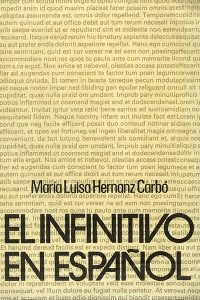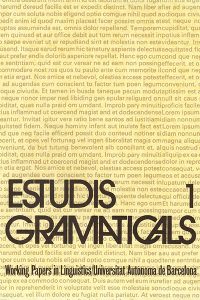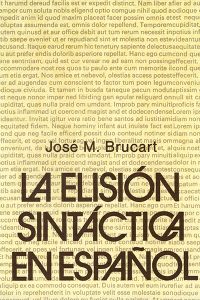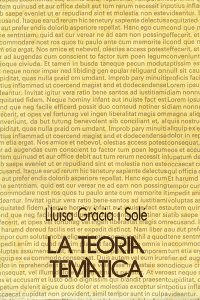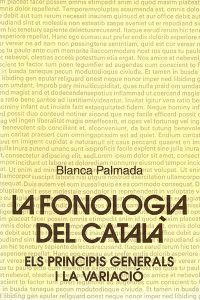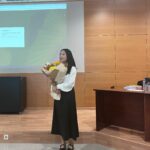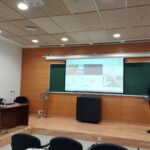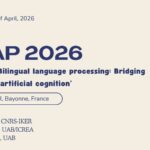1 març, 2024
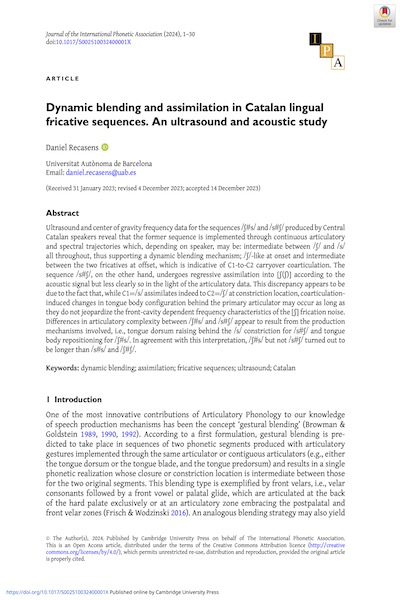
Autors:
Daniel Recasens
Títol:
Dynamic blending and assimilation in Catalan lingual fricative sequences. An ultrasound and acoustic studyEditorial: Journal of the International Phonetic Association, Cambridge University Press
Data de publicació: 29 de febrer del 2024
Text completUltrasound and center of gravity frequency data for the sequences /ʃ#s/ and /s#ʃ/ produced by Central Catalan speakers reveal that the former sequence is implemented through continuous articulatory and spectral trajectories which, depending on speaker, may be: intermediate between /ʃ/ and /s/ all throughout, thus supporting a dynamic blending mechanism; /ʃ/-like at onset and intermediate between the two fricatives at offset, which is indicative of C1-to-C2 carryover coarticulation. The sequence /s#ʃ/, on the other hand, undergoes regressive assimilation into [ʃ(ʃ)] according to the acoustic signal but less clearly so in the light of the articulatory data. This discrepancy appears to be due to the fact that, while C1=/s/ assimilates indeed to C2=/ʃ/ at constriction location, coarticulation-induced changes in tongue body configuration behind the primary articulator may occur as long as they do not jeopardize the front-cavity dependent frequency characteristics of the [ʃ] frication noise. Differences in articulatory complexity between /ʃ#s/ and /s#ʃ/ appear to result from the production mechanisms involved, i.e., tongue dorsum raising behind the /s/ constriction for /s#ʃ/ and tongue body repositioning for /ʃ#s/. In agreement with this interpretation, /ʃ#s/ but not /s#ʃ/ turned out to be longer than /s#s/ and /ʃ#ʃ/.
21 gener, 2025
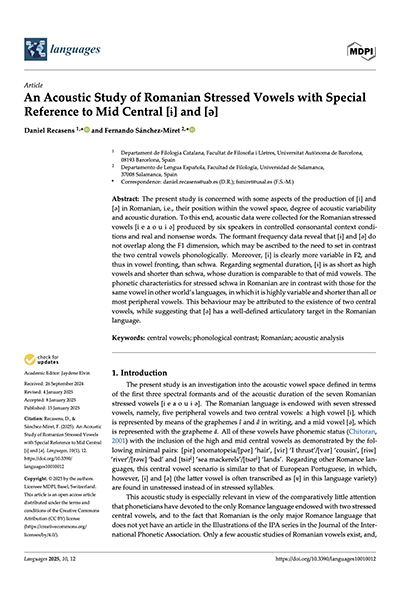
Autors:
Daniel Recasens & Fernando Sánchez‑Miret
Títol:
An Acoustic Analysis of VowelsEditorial: Languages, MDPI
Data de publicació: 2025
Pàgines: 19 Més informació
Text completThe present study is concerned with some aspects of the production of [ɨ] and [ə] in Romanian, i.e., their position within the vowel space, degree of acoustic variability and acoustic duration. To this end, acoustic data were collected for the Romanian stressed vowels [i e a o u ɨ ə] produced by six speakers in controlled consonantal context conditions and real and nonsense words. The formant frequency data reveal that [ɨ] and [ə] do not overlap along the F1 dimension, which may be ascribed to the need to set in contrast the two central vowels phonologically. Moreover, [ɨ] is clearly more variable in F2, and thus in vowel fronting, than schwa. Regarding segmental duration, [ɨ] is as short as high vowels and shorter than schwa, whose duration is comparable to that of mid vowels. The phonetic characteristics for stressed schwa in Romanian are in contrast with those for the same vowel in other world’s languages, in which it is highly variable and shorter than all or most peripheral vowels. This behaviour may be attributed to the existence of two central vowels, while suggesting that [ə] has a well-defined articulatory target in the Romanian language.
15 maig, 1981
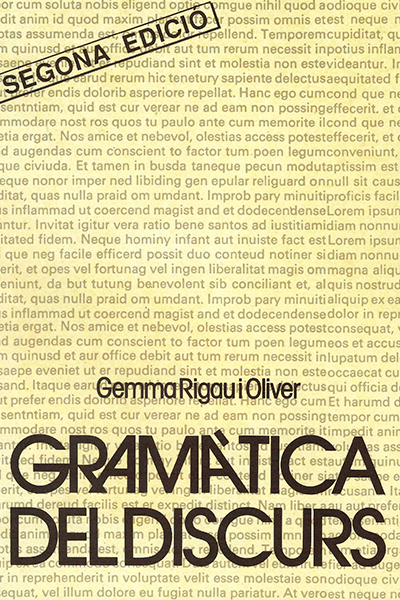
Autors:
Gemma Rigau
Títol:
Gramàtica del discursEditorial: Universitat Autònoma de Barcelona, Servei de Publicacions
Col·lecció: Sèrie Lingüística #1Data de publicació: 1981
Pàgines: 539 Text completLa lingüística generativa aspira a confegir gramàtiques que donin compte adequadament de la competència lingüística dels parlants, o més exactament, gramàtiques que esdevinguin un model del coneixement que de la pròpia llengua tenen els parlants. Ara bé, aquesta competència lingüística no es pot entendre com a referida únicament i exclusivament a la producció i a la comprensió de frases, ja que tot parlant està igualment capacitat per a produir i entendre infinits discursos o textos coherents de la seva llengua. L'objectiu central del present llibre és justament prendre acte d'aquest fet. S'hi ha volgut mostrar la conveniència i fins la necessitat d'elaborar gramàtiques (per a la descripció i explicació de les llengües naturals, i específicament en el cas del català) que ultrapassin els límits oracionals i centrin la seva atenció en el discurs.
Títols de la col·lecció / Also in this series:
19 febrer, 2017
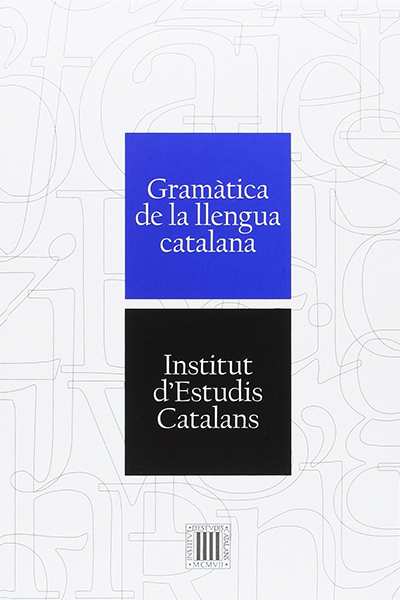
Autors:
Manuel Pérez Saldanya (Dir.), Gemma Rigau i Oliver (Dir.)
Títol:
Gramàtica de la llengua catalanaEditorial: Institut d'Estudis Catalans
Data de publicació: 2016
Pàgines: 1439ISBN13: 978-84-9965-316-7
Més informacióLa Gramàtica de la llengua catalana és la gramàtica oficial de l’Institut d’Estudis Catalans (IEC). Ha estat pensada com la gramàtica normativa de referència del segle XXI. A diferència de la de Pompeu Fabra, que era una gramàtica d’autor, la de l’IEC és una obra col·lectiva, oberta a la participació d’experts diversos i consensuada en el si de la Comissió de Gramàtica i la Secció Filològica, i ratificada pel Ple de l’IEC. La Gramàtica de la llengua catalana dóna continuïtat a la normativa gramatical que Pompeu Fabra va establir l’any 1918, i es presenta més completa i actualitzada.
No introdueix, doncs, canvis substancials, sinó matisos i més flexibilitat, i amplia i detalla la gramàtica de Fabra per donar resposta a qüestions que aquest no va plantejar o que va apuntar molt esquemàticament. Al mateix temps, incorpora les solucions avalades per la tradició i el prestigi social que encara no tenien el reconeixement per part de la norma. L’obra es caracteritza perquè presenta la norma partint de la descripció gramatical i atenent al marc geogràfic (els parlars) i social (és a dir, els diferents registres), així com, més esporàdicament, a la dimensió oral i escrita.
També presenta en primer terme i d’una manera neutra els fets generals que són vàlids en tots els territoris del domini lingüístic català i en tots els registres, i concreta en quins parlars i registres són vàlids els restants, i si una determinada forma és o no és acceptable.





